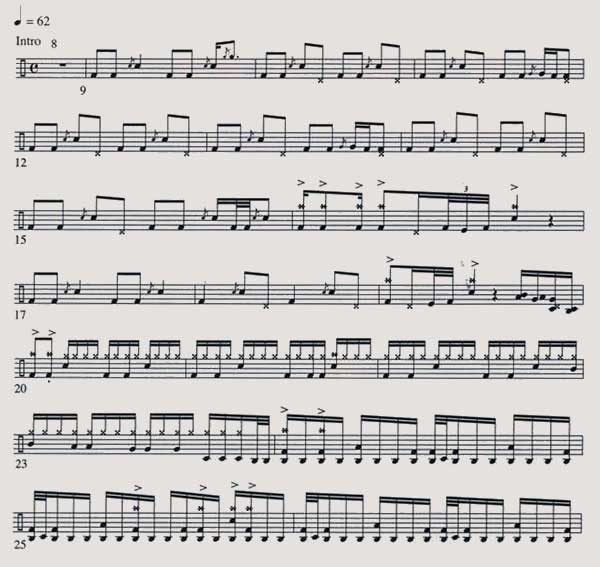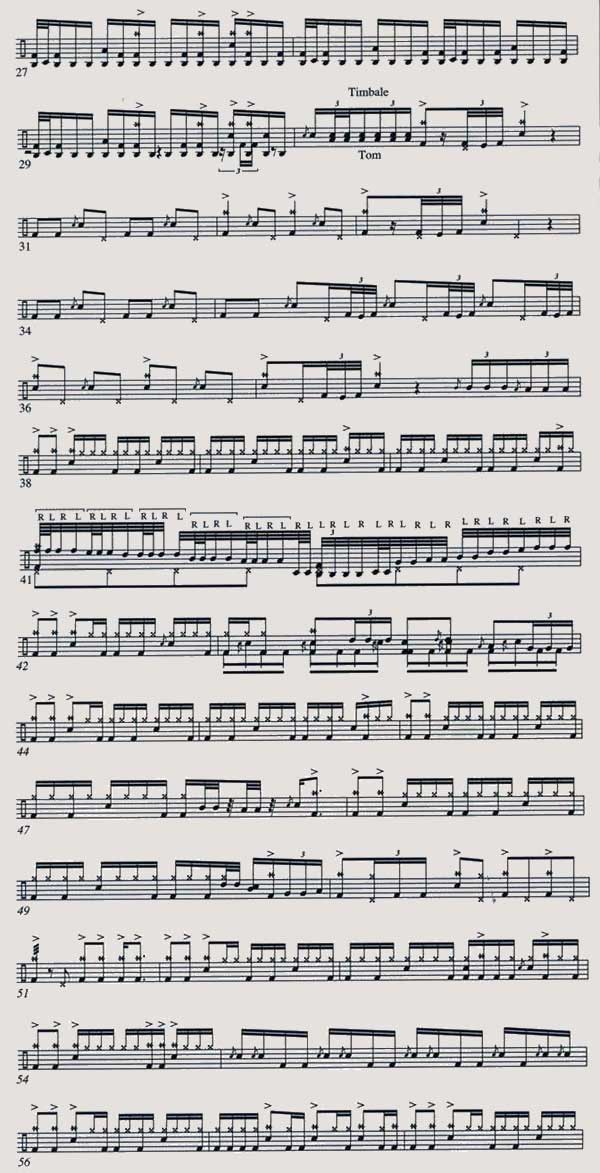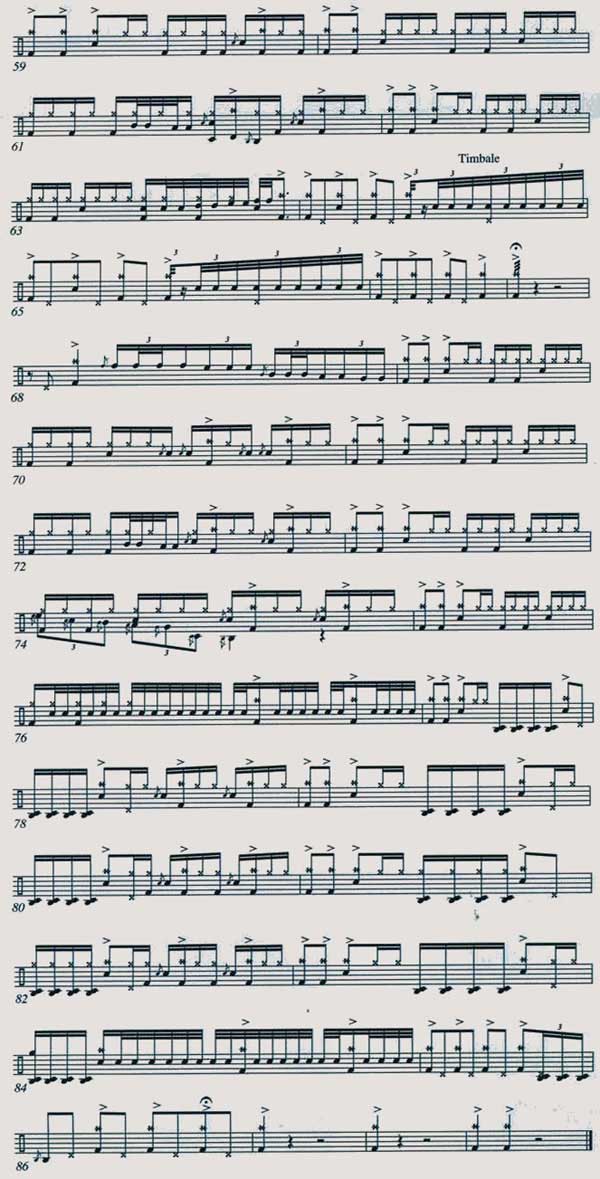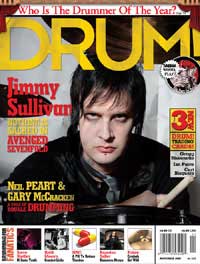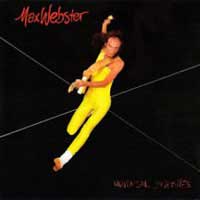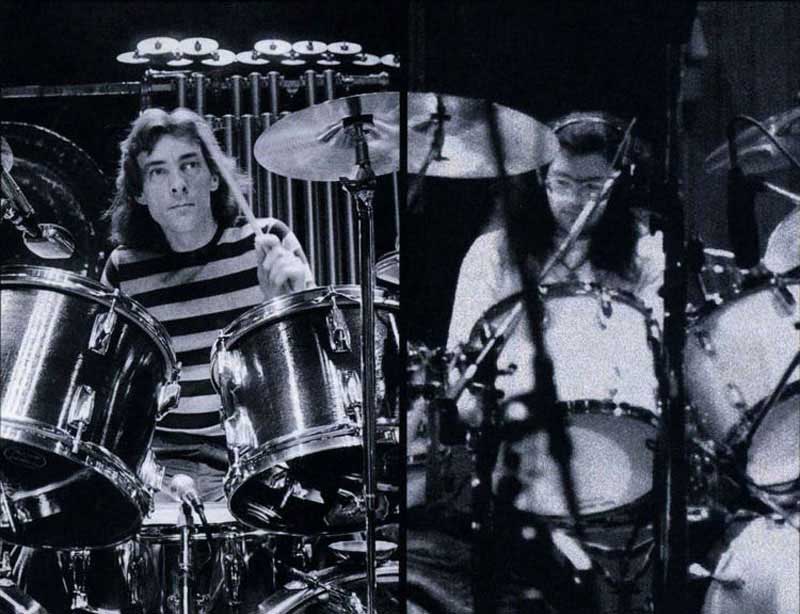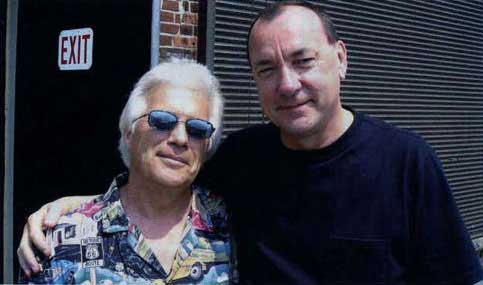Drum Part: Peart & McCracken 'Battle Scar' By Max Webster
By Robert Sibony & Topher Stott, DRUM!, November 2007
Although Max Webster never made much of an impact in the States, the band enjoyed a loyal following in Canada during its heyday in the '70s with a progressive metal sound that predated many of today's prog outfits. The drum chair belonged to Gary "Stix" McCracken, who was a great influence on many drummers of that era, and became a close friend of Neil Peart while Max Webster toured extensively with label mates Rush.
In Fact, the two groups grew so close that they combined forces in 1980 to record the song "Battle Scar," which appeared on the sixth Max Webster album Universal Juveniles. "A couple of weeks before the session, Gary McCracken drove out to my home, a farmhouse in Beamsville," Peart says. "I had a drum room above the garage, with two drum sets, and Stixie and I worked out some approaches to different parts of the song, combining unison drumming, alternating fills - that was tough. We spent an enjoyable afternoon banging away, and sorted out our map for the performance.
"Back then I was the proud owner of a Ferrari 308 GTS, black with red interior, and I remember driving across Toronto to Phase One Studios under looming clouds. After carefully choosing a safely remote parking spot to back the car into, I stood under the building's overhang and watched a violent thunderstorm sweep the parking lot. The storm was a good overture for what was about to happen inside the studio - what I would later describe as a 'Wagnerian tumult.'"
Picture the rare sight of two seperate bands set up in the studio - two drummers, bass players, guitarists, and vocalists, plus a full rig for Max Webster's keboardist Terry Watkinson. According to Peart, the tracking room wasn't particularly large to begin with, "especially when filled by Stixie's and my expansive drum sets, half isolated by baffled panels, like the guitar amps.
"Amid the seven of us crowded in there, banging and chording away, producer Jack Richardson stood in the eye of the storm, conducting us like an orchestra leader with grand gestures and body language. That kind of engagement from a producer is rare, but was perfectly appropriate to the occasion. All of us played the song several times together, with adjustments and suggestions along the way, and a few hours later, with vocal overdubs, it was done. I asked for a cassette of the rough mix to listen to on the way home - always the best reward."
The tune features a heavy, deliberate groove with some incredible double drumming. Despite the fact that two of the greatest rock drummers of the day both play the complex parts, often in unison, the performance still breathes with a well-defined sense of space -a minimalist approach somewhat out of character for both drummers. Taken at a challengingly slow tempo of 62 bpm, McCracken and Peart nail the intense feel perfectly with a balance of muscle and musicianship, keeping their focus on the time without getting carried away with the daring fills that push the tune.
In order to properly reflect both Peart's and McCracken's large drum sets of the day, we have added three toms to the five featured in the master drum key on page 20. The highest tom appears on the top line, and two floor toms appear on the line below the staff and in the space below that line.
McCracken starts the groove at bar nine, as Peart plays a light flam on the bell of the ride cymbal on the e of beat 4. Peart comes in on beat 4 of bar 15 as the feel begins to build. Take a look at the over-the-bar-line fill that Peart and McCracken play starting on the ah of 4 in bar 22. Phrased on the back of the beat, it sets up Peart's heavy tom groove in the second verse, where McCracken plays all of the cymbal crashes, enabling Peart to keep the groove flowing. McCracken plays a tricky fill in bar 37 that features left-handed flam triplets as he moves down the toms.
All bets are off in bar 41 as both drummers play an intense fill split between the two kits. Peart plays from his high tom to low in the first two beats and is answered seamlessly by McCracken playing from his low floor tom to high tom in the last two beats. McCracken plays the quater-note pedal hi-hat through this bar, as well as throughout the entire song.
It practically sounds like four drummers during bar 43, as the drummers pull off an interconnected fill with Peart playing three against four between the snare and kick starting on the e of 1 as McCracken plays the toms. Peart improvises some tight thirty-second-note triplets in bars 64-65, while bar 68 features a dramatic unison fill that pushes the final chorus that leads the tune to an enormous climax. At bar 76, Peart starts off the fill on the second sixteenth-note of beat 1 as McCracken catches up by the second sixteenth-note of beat 2. Bars 77-83 are all played in unison. Now breathe.
"I still love the way that song turned out, and treasure the memory of making it," Peart says. "Today, if I play back 'Battle Scar' in my mind's ear, I have to say that the textured weight and impassioned rawness is a great marriage of both band's sounds."
Peart closes his reminiscences by revealing a little-known nugget of rock and roll history. "Another reward from that day was a conversation I had with Max's lyricist, Pye Dubois, in which he passed me some verses he thought might be suitable for Rush. After I imposed a few of my own images, and more Rushean sense of order, those lyrics evolved into 'Tom Sawyer,' still one of our most popular songs."
